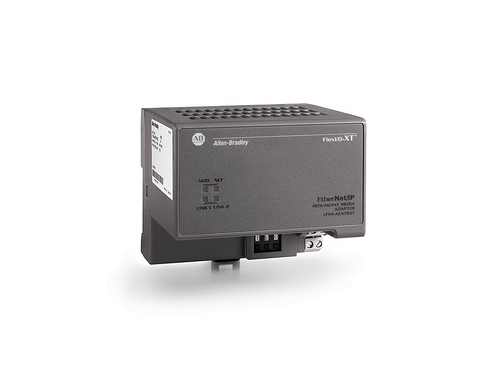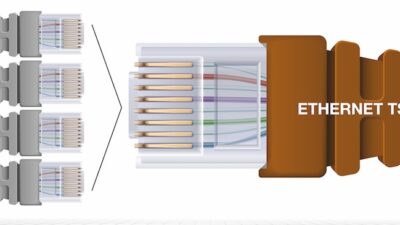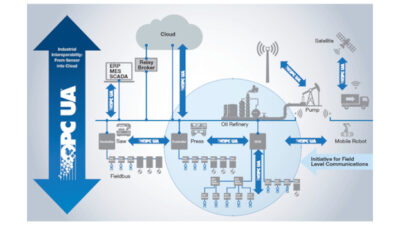The Allen-Bradley Flex I/O dual-port EtherNet/IP adapters support a device-level ring (DLR) topology, which provides robust network infrastructure and fast recovery time.

The Allen-Bradley Flex I/O dual-port EtherNet/IP adapters from Rockwell Automation help OEMs connect machines to end customers’ IT infrastructures using one network. With the dual ports, users can also leverage the adapter to display diagnostics via a simple Web browser, helping reduce troubleshooting and downtime.
The EtherNet/IP adapters support a device-level ring (DLR) topology, which provides network infrastructure and extremely fast recovery time, while keeping implementation cost down. DLR infrastructures are connected at the end device versus the switch. With no need for unnecessary switches and cabling, users can reduce design time and simplify implementation. The ring also adds a measure of redundancy that is very effective when a connection fails – as a single network failure, such as a cable break, will not lead to the failure of the other devices in the ring. A DLR network can recover in less than 3 milliseconds for a 50-node system. During this time, the connection between the programmable automation controller and the I/O device is not interrupted. The adapters also support the daisy-chain topology for applications that involve devices located long distances from CPU subsystems.
The adapters (1794-AENTR and 1794-AENTRXT for extreme environments) are compatible with these Rockwell Software products: RSLogix 5000 programming software version 16 and higher and RSLinx version 2.58 and higher. The adapters also can connect up to eight FLEX I/O modules.
ODVA manages the EtherNet/IP Ethernet protocol.
Rockwell Automation
– Edited by Chris Vavra, Control Engineering, www.controleng.com


